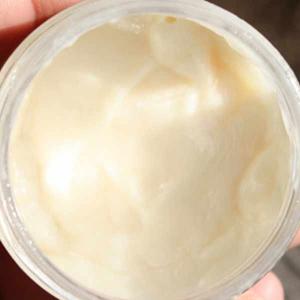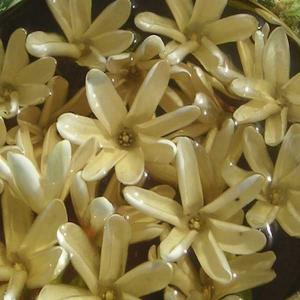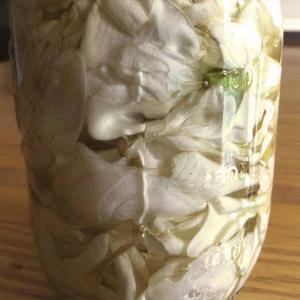
HOME MADE MONOI OIL - MIXTURES
COMPONENTS
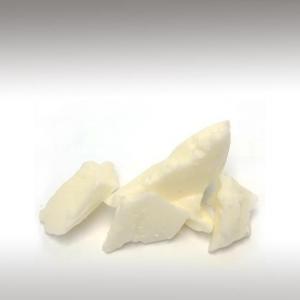

 Refined Coconut Oil (Cocos Nucifera)
Refined Coconut Oil (Cocos Nucifera)
500 millilitre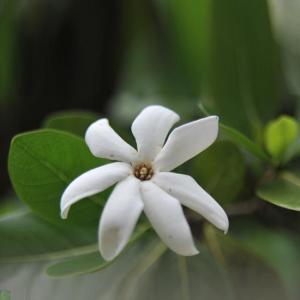

 Tahitian Gardenia Flower (Gardenia Tahitensis)
Tahitian Gardenia Flower (Gardenia Tahitensis)
100 unit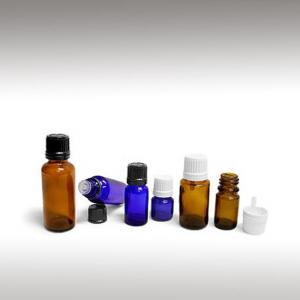

 Oil Bottles
Oil Bottles
1000 millilitreDESCRIPTION / INSTRUCTIONS
Monoi oil recipe:
Pick enough Gardenia flowers to fill at least one of your sterilized mason jars.
Rinse the flowers and put them on a paper towel to dry.
When the flowers are dry, add them to a mason jar and pour pure Coconut oil over the flowers.
Push down top of mixture with a wooden spatula. Top it off.
Screw on the lid (not iron) tightly.
Set the jar in the window three to four hours a day every day for a month.
By the end of month, you'll have beautiful, finished Monoi oil.
Strain the petals from the mason jar once the month is up. You'll want to strain the oil at least twice to ensure all of the petal particles have been removed.
Pour the strained oil, which is the finished product, into another sterilized mason jar and store the jar in a dark place till you want to use it.
The best ratio is 200:1 (200 unit Gardenia Tahitensis flower in the 1 liter of refined Coconut oil).
Refined coconut oil is the best that has no odor in this oil formula. It just takes the best features of Gardenia Tahitensis flowers.
Description about Monoi oil:
Monoï (pronounced Mah-noy) is an ancient Tahitian word meaning "Scented oil" in the Reo-Maohi language.
Monoï is widely used among French Polynesians as a skin and hair softener.
Monoi oil is an infused perfume oil that is made by soaking the petals of Tiaré flowers (Tahitian Gardenias) in a semi-wax Coconut oil.
Monoi oil is a result of enfleurage, the art of extracting active or aromatic ingredients by gently macerating flowers in refined Coconut oil.
The 2,000 year old technique has been perfected through the ages for cosmetic and pharmacological purposes.
Early European explorers who travelled to the Polynesian Islands, including James Cook, documented the natives use of Monoi for medicinal, cosmetic and religious purposes.
Monoi featured prominently in the lives of these ancient people, from birth until death. It was applied to the bodies of newborns to keep them from dehydrating in hot weather, and from getting chilled in cooler temperatures.
When a person died, their body was embalmed and perfumed with Manoi to help facilitate their journey into the afterlife.
Maori navigators used manoi to protect their bodies from cold, harsh winds and salt water during long canoe expeditions at sea.
The "Mamas" of Tahiti, who we like to think of as sort of, "cultural matriarchs" are among the first to ever create Monoi and continue to do so, island-style, today. They are the makers of traditional Monoi oil, made by hand, at home for use by their families and friends.
Different island groups of Tahiti even have different ways of making it, with varying plant ingredients that make their own Monoi special to them.
The name "Monoi de Tahiti" designates the product made in French Polynesia and obtained by macerating fresh Tiare Tahiti flowers in refined Coprah oil. Coconuts of the Cocos Nucifera variety must be grown on coral soil and harvested at a mature stage.
Tiare flowers (Gardenia Tahitensis), handpicked as buds, must be used 24 hours of harvesting. According to local tradition, the maceration must last a minimum of 10 days and requires at least ten Tiare flowers per liter of refined oil.
Monoi oil is used:
After a shower or bath to rehydrate skin to its natural healthy look.
Before or after a swim, it provides protection against the effects of sun, wind, sea or pool water.
As a pre-shampoo hot oil treatment, it helps repair and deep condition the hair to a healthy shine.
During a bath. A few drops in the water reportedly encourages relaxation while keeping skin soft and subtly fragrant.
As a dark tanning oil.
After being warmed in the palms of the hands, it is suited for massaging sore parts of the body or for warming up a weak body.
As a pain reliever for sunburn.
COMMENTS
No comments.



